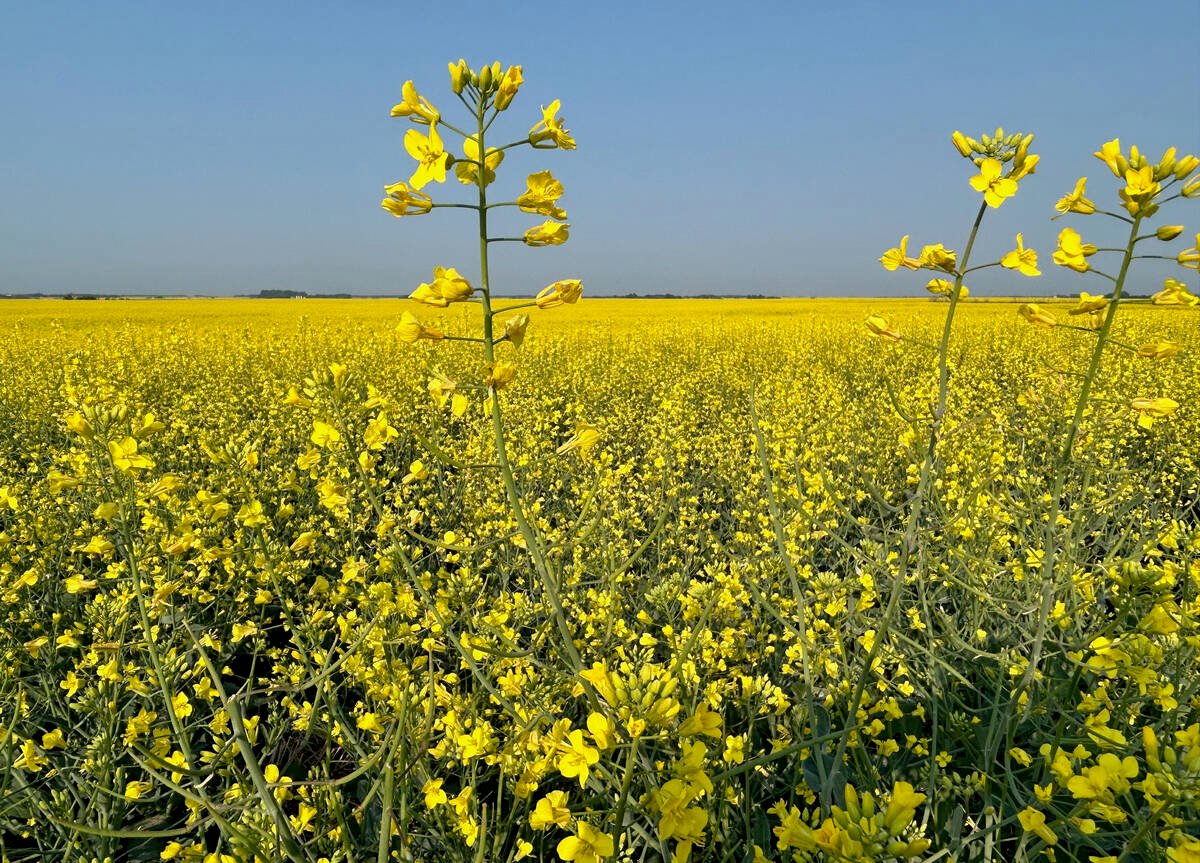Farmers who can’t rely on chemicals should be contemplating a variety of other strategies to deal with what most experts expect will be strong weed competition this spring.
Topping the list of organic weed control techniques is the tried and true tillage method, said Saskatchewan Agriculture crop specialist Sherrilyn Phelps.
And when it comes to tillage, timing is everything.
“The closer (farmers) can do that to the day of seeding the more advantage the crops will have if they can set up before the next flush of weeds,” she said.
Read Also

Record canola harvest expected
Anecdotal reports from agronomists, crop production advisors, landowners and grain industry reps, combined with provincial reports, indicates that canola yields could break the yield record set in 2016
Crop choice is also critical. If farmers have a really weedy field they should plant more competitive crops such as barley, oats and other cereals.
If they insist on growing susceptible crops like flax, which has been a moneymaker for organics, they might want to consider mixing it with wheat seed to give the flax a fighting chance.
Another popular intercropping combination is oats and peas, said Phelps. For the technique to work, it has to be two crops that are easy to separate during the post-harvest cleaning process.
With a number of weed experts predicting intense pressure from winter annuals and volunteer crops this spring, it is probably not a good year to reduce seeding rates, Phelps said.
“Because we’ve got the moisture there is nothing limiting (the weeds). Once the sun is out, they’re going to start coming.”
Based on experience derived from the long-term organic cropping experiment at the Scott, Sask., Research Farm, it is a safe bet weeds will indeed present a challenge to growers in 2005, said Agriculture Canada weed biologist Eric Johnson.
“We typically find after a wetter year much higher populations of weeds the following year,” he said.
Preparation for the onslaught has a lot to do with the type of crop seeded and the field’s weed history.
For the most part it is best to delay seeding as long as possible, giving the weeds a chance to germinate before disturbing them with tillage. Organic growers typically seed two weeks after their conventional counterparts.
But for late-germinating weeds like green foxtail or redroot pigweed, growers would be better off seeding early to get a jump on the competition.
If growers are planting a small-seeded crop like flax, they should till before seeding. But if they are growing a large-seeded crop like peas, which are planted deep in the soil, they might want to give the field a pass with a rod weeder between seeding and crop emergence.
If wild oats are a problem growers might want to do an early-season till, wait a week or two and then hit the field again once the oats have emerged.
Annual weeds are not the only concern this year. If 2005 is another wet year, growers will have to keep a close eye on the emergence of perennials.
Once established, a persistent weed like Canada thistle can have a devastating impact on an organic farm, said Johnson.
“If (growers) find some patches, try to do something about it this year rather than before it becomes a real problem,” he said.
Perennials that develop from seedlings can be easily handled through tillage or mowing but once they set deep roots, they are difficult to kill.

















